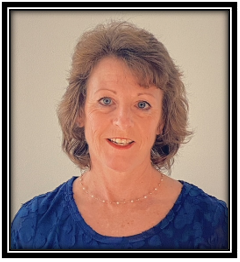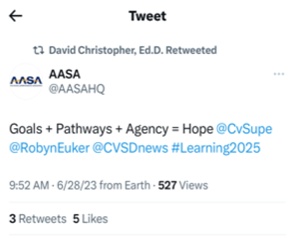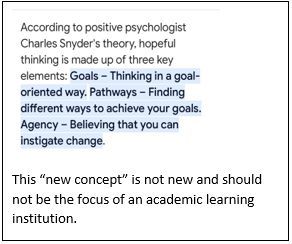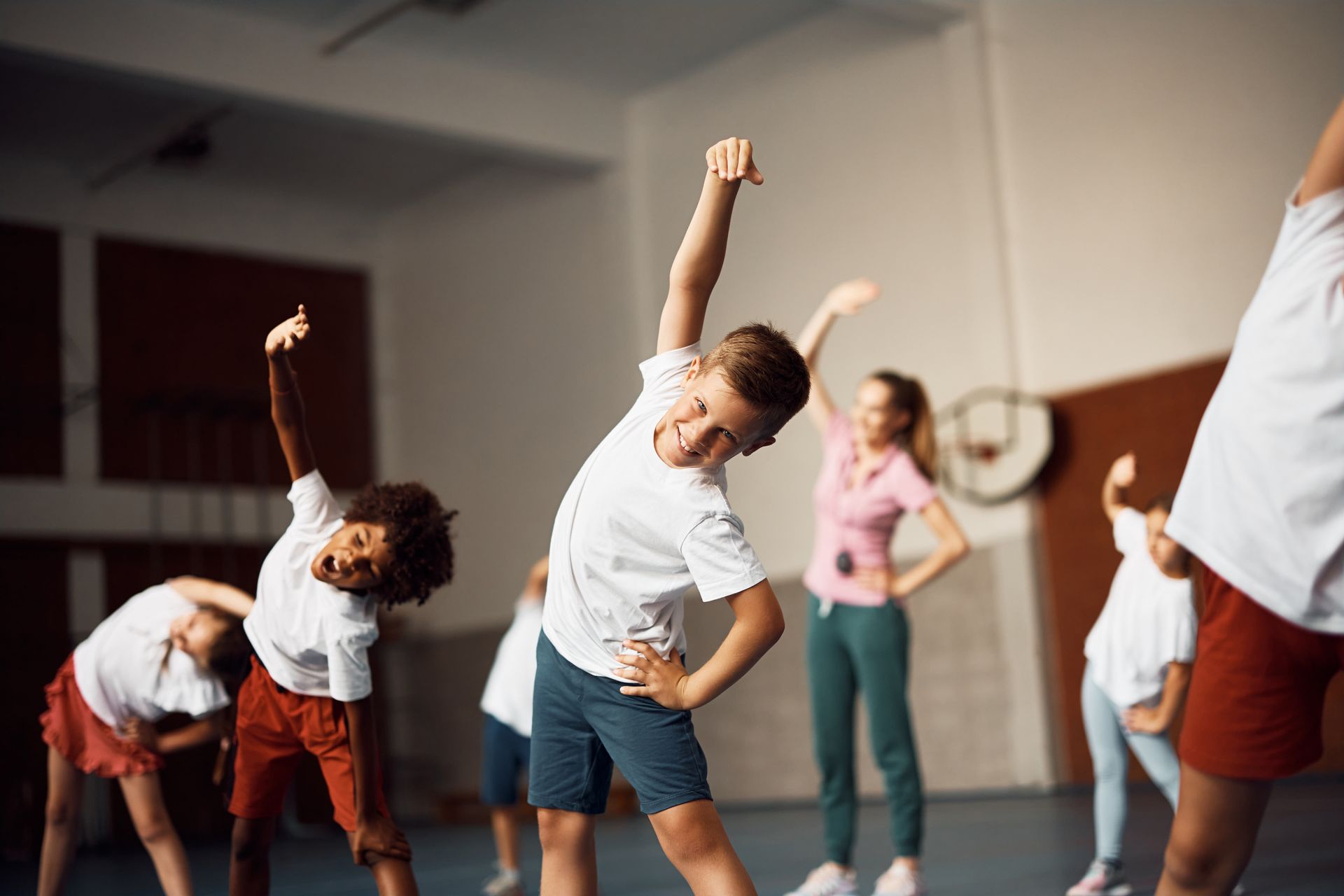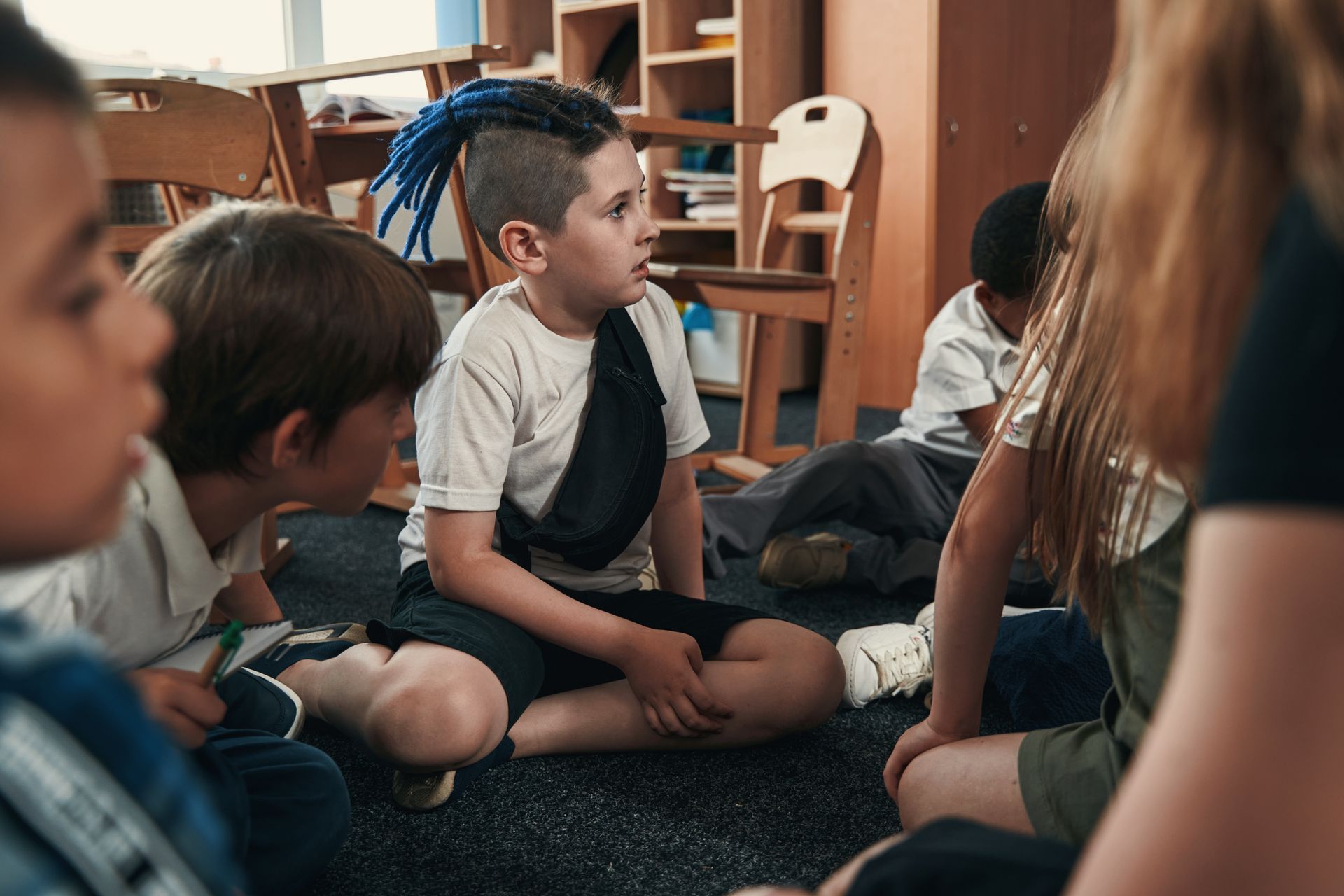DID YOU
know?
CVSD Administration believes HOPE is more important than CONTENT in the classroom! Hope over academic learning doesn’t seem responsible to our students, families or taxpayers…
The School Superintendents Association (AASA) hosted the Learning 2025 National Summit June 26th-28th in Washington, DC. Cumberland Valley was represented by our Superintendent, Dr. David Christopher and our Director of Curriculum, Instruction and Assessment, Dr. Robyn Euker. This is one of many organizations influencing the changes in focus and direction of the public education system. AASA Learning 2025: Student-Centered, Equity-Focused, Future-Driven Education is a movement that calls for holistic redesign of the public school system by 2025. Please read it for yourself so you know where the educational system is going with all their new public-private multibillion dollar partnerships. https://www.aasa.org/docs/default-source/resources/reports/commissionreportfinal-040821.pdf?sfvrsn=ae95668f_4
The question that needs to be asked by our community and answered by our administration and school board is what exactly does the “holistic redesign” look like for academic education. Is there evidence that shows the programs and policies they are implementing to achieve this redesign will increase academic achievement? If so, present it to the community and parents.
Everything I have read and listened to over the past three years has shown that there is no evidence in their “evidence based” programming and no one will have a conversation with me to explain how they can spend taxpayer money on experimental programs that are taking away from academic learning time. They always refer back to a meta-analysis that claims 11% academic improvement, but please read the study yourself and you will see it is correlative not proof of causation.(https://openexcellence.org/wp-content/uploads/2013/10/SEL-MetaAnalysis.pdf) If children have these competencies they are likely to do better in many areas of their lives. However, aspirations are not evidence, but that is what they use as justification for implementing these programs.
Here is the Retweet that Dr. Christopher sent out from the AASA conference last month:
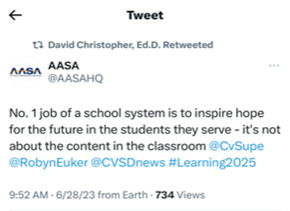
We pay our superintendent over $190,000 a year and his statement is that “The No 1 job of the school system is to inspire HOPE in the future in the students they serve - It’s not about the content in the classroom.” Understanding that is now the focus of the administration and school board, it would explain why test scores are going down and why even the kids are saying they are not learning. Our current school board gives our superintendent rave reviews regarding where he’s taking the school district which assists in his pay raises every year. Is this really the direction we want our academic institutions going?
DID YOU
know?
CVSD believes HOPE is more important than GPA for success
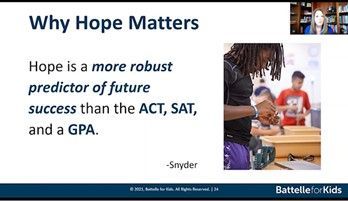
In 2021, CVSD hired Battelle for Kids for our Portrait of a Graduate/Eagle social emotional learning program. I shared with the board from my research that their philosophy was not about how their program could improve academic learning, but simply to move away from academics and focus on competencies. I told them that they say that HOPE is more important than a GPA for success of students. Our kids will have hope when they have academic learning achievement. They will then have the skills and confidence to go out into society and have choices of what they want to accomplish with their lives. Not from sitting in classrooms learning about feelings and competencies. Competencies are modeled and learned through family values and should not be the focus of academic institutions.
CVSD will say teaching these competencies will increase academic achievement, however, all of the studies show that there is absolutely zero proof that is true. There is correlation but absolutely NO causation after decades of studies and mega studies. Nobody on the board or in administration seems to care about the true facts that there is no evidence and they are experimenting on our children in the classroom with these concepts. Wasting time and taxpayer money. I asked them to simply look into the company and programs they were bringing into the district. Still I was ignored. Now we are here focusing on HOPE and this is where our school district is headed unless some serious changes happen in these positions. And here is Dr. Christopher at the ASAA conference telling every exactly what they are doing… “Using Portrait of a Graduate to Support Implementation of School System Redesign”. That is a design not based on academic learning and content… but on hope and competencies by teaching perspective and character development through the lens of equity.
DID YOU
know?
CVSD will use more surveys about feelings to determine your child’s level of hope
Keep your eyes open for the new language relating to HOPE for the upcoming year for our students. This is nothing wrong with wanting our children, teachers, and community to have hope. But hope is anticipation of a desire to happen or be true. What our hope is based in comes from our values and our belief system. When they try to use these lofty phrases of inspiring hope, we need to ask exactly how are you going to do that. It will be more surveys and more classroom discussions about feelings, social justice, and systematic inequity that have caused feelings of less hope or hopelessness. They will use this Goals+Pathway+Agency with a lot of words attached. The problem with this agenda and program they will be selling to the taxpayers and parents is that it is based off of CR Snyders Hope Theory. I think we can all agree having hope and an optimistic outlook is vital to healthy human development and lifestyle no matter what age. But even Snyder admitted that they found that individuals that have hope and are optimistic tend to do better academically, but there is no evidence there was a causation but only that there is correlation. So because SEL is now a multibillion dollar industry, they are using theory to implement programs to experiment on kids to “redesign” the educational system. It sounds fancy when you say: Goals + Pathways+ Agency = Hope and it seems like it validates a process to incorporate more SEL to help promote positive behaviors and a positive mindset. Aspirations do not equal evidence.
Our children will have an optimistic view of their future and a positive mindset if they are given a solid, challenging, academic education where they learn hard skills. Teach academics in an environment that promotes responsible behavior and give our children the skills and confidence they need now and in the future. Not spending precious time on the theory of hope and constantly discussing feelings. Public education is to teach academic skills and knowledge…hope will be inspired and nurtured in that very process.
These quotes are from the actual research from Hope Theory:
“Overall, this study suggests that higher as compared with lower hope students (a) set higher grade goals, (b) tended to perceive that they would be more successful at attaining those higher grade goals despite early grade feedback that was not supportive of their estimate, and (c) actually attained higher grades. In regard to this latter point, however, note that students with differing levels of hope were equally successful at attaining the goals that they had set for themselves, although the higher hope students set and attained higher grade goals.”
“Again, therefore, cognitive capability as measured by reported high school GPA did not account for the hope-grade attainment relationship.”
“…note that higher and lower hope people in the present studies were equally likely to attain their goals. This latter conclusion must be placed in the context of the fact that the lower hope people attained their lower goals and the higher hope people attained their higher goals”
“Related to these points, through both correlational and causal methodologies, we have found that persons confronted with insurmountable goal blockages experience negative emotions, whereas successful, unimpeded goal pursuit or successful goal pursuit after overcoming impediments yields positive emotions (Snyder et al., 1996).”
All these papers do is state the obvious/known and try to make it seem that because they talk about hope, it will happen in whatever convoluted program they bring in. There are correlational and causal relationships with hope and achievement. They have not been able to show causation for all the time and money spent on increased psychology in the classroom. Here is one more survey that will be coming to the classroom to “help” your child . Please note that they even state do not call it a “Child Hope Survey” but rather “Questions About Your Goals” because who doesn’t want children to have and reach goals??? See how they use words to make it seem more productive than it is or will be?
All of the below questions are to be answered with one of the following so they can be assessed, then reassessed, and then reassessed some more….
___None of the time
___A little of the time
___Some of the time
___A lot of the time
___Most of the time
___All of the time
1. I think I am doing pretty well.
2. I can think of many ways to get the things
in life that are most important to me.
3. I am doing just as well as other kids my
age.
4. When I have a problem, I can come up
with lots of ways to solve it.
5. I think the things I have done in the past
will help me in the future.
6. Even when others want to quit, I know that
I can find ways to solve the problem.
Notes: When administered to children, this scale is not labeled “The Children’s Hope Scale,” but is called “Questions About Your Goals.”
Is this what you want happening during your child’s academic learning time? More surveys about their feelings and then they get to interpret your child’s view/perspective.
COMMUNITY Spotlight
There are business owners in our area that go out of their way to encourage and support hard work from our local students. John Pham is one of those business owners. He holds an annual event where they open a donation box and then divide up the money among honor roll students that come in and present their report cards. It is called the Little School Bus Scholars Program. All middle school and high school students that present an honor roll report card to John any quarter during the year, will put them on the list, and a free Pho. Any more report cards on honor roll gets more Pho! All children that have A and B grades can participate! His restaurant is Pho Ninh Kieu at 344 E Main St, Annville, PA but his original restaurant was in Harrisburg. I learned about this through a local CV resident and thought it was worth sharing. First of all to thank John for his dedication to encouraging academic learning and achievement and then to see if there are any business in the CV school district that do this or want to start something like this!
In June each year, they open the Little School Bus, count the money at a public event, and present the checks the next week. This year Representative Russ Diamond joined then and helped hand out the checks. The check is made out to the student and usually the parents handle it for them. They can do whatever they want with it. It's appreciation for doing a good job. This year each student received $280. It seems to average about $2500 per year the last few years I've been involved.
John Pham, the owner of Ninh Kieu Restaurant in Annville, knows the value of hardwork and education. 55 years ago, a teacher in Vietnam would have 70 students in their classroom. Every student was ranked, and only the top three would continue with their studies. John was consistently in the top three, and every time he was, his father would reward him. John looks forward to promoting scholarship and carrying on the tradition with the fine students of Central PA, his new home. They also accept donations to their 501c3 at https://www.paypal.com/US/fundraiser/charity/4697553
If you know of a local business doing something like this, please message me so we can highlight and support them as they support our children in academic achievement! Thanks John Pham for being a great part of our Central Pennsylvania Community!
OUR
Insights &
Perspectives
CVSD
calendar
30
1
2
3
4
5
6
7
8
9
10
11
12
13
14
15
16
17
18
19
20
21
22
23
24
25
26
27
28
29
30
31
1
2
3



